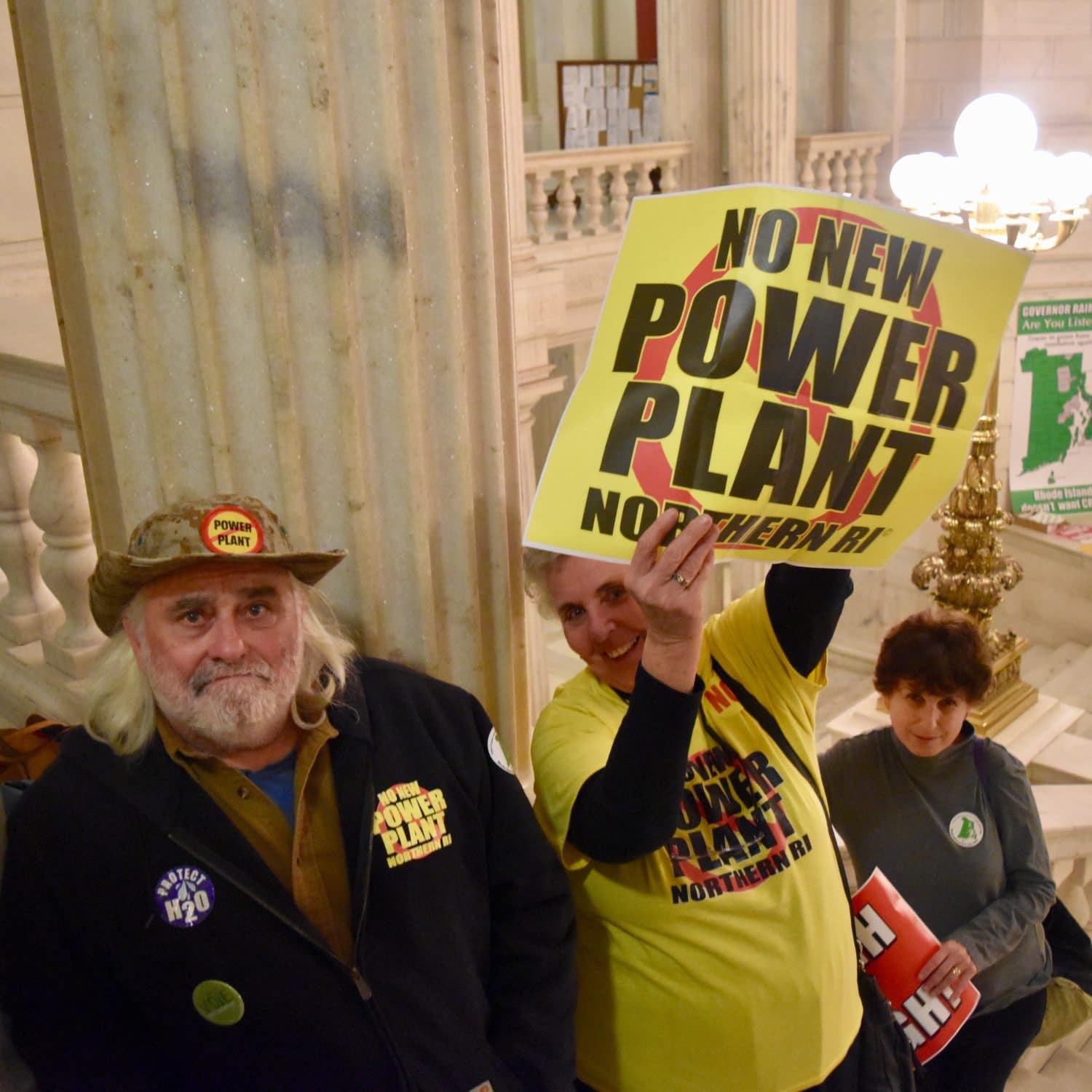CLF’s Jerry Elmer: ‘Invenergy is being a bully.’
“As a public relations matter, this makes Invenergy look like a bully,” said Conservation Law Foundation (CLF) Senior Attorney Jerry Elmer referring to the report by Alex Kuffner in yesterday’s Providence Journal that Invenergy has chosen not to make its legally required payment to Burrillville. “The reason this makes Invenergy look like a bully is simple,” said Elmer. “Invenergy is
January 18, 2018, 6:01 pm
By Steve Ahlquist
“As a public relations matter, this makes Invenergy look like a bully,” said Conservation Law Foundation (CLF) Senior Attorney Jerry Elmer referring to the report by Alex Kuffner in yesterday’s Providence Journal that Invenergy has chosen not to make its legally required payment to Burrillville.
“The reason this makes Invenergy look like a bully is simple,” said Elmer. “Invenergy is being a bully.”
In the Providence Journal Kuffner noted that Burrillville made no secret of their intentions when they entered into the agreement with Invenergy. The town took the money to fight the proposed $1 billion fracked gas and diesel oil burning power plant aimed at the pristine forests of northwest Rhode Island. Kuffner writes:
“… as the town continues to mount a vigorous campaign against the fossil fuel-burning plant, Invenergy has had enough. After making $1.175 million in payments to the town, the Chicago company was set to pay another $500,000 installment on Monday. Instead, it placed the money into an escrow account.
Michael Blazer, chief legal officer for Invenergy, said the town is violating the agreement by disseminating what he describes as “misleading information” aimed at derailing the project known as the Clear River Energy Center.
Invenergy’s denial of contracted payments has legal ramifications for the future of the proposed power plant, says Elmer, who has been representing the CLF in advocating against the permitting of the plant before the Energy Facilities Siting Board (EFSB).
“As a legal matter, Invenergy’s unwise action strengthens CLF’s argument against granting Invenergy a permit,” writes Elmer. “You will recall that the reason the EFSB scheduled a Show Cause Hearing for January 30 was the letter that CLF and Burrillville sent to the EFSB about the two newly filed lawsuits about Invenergy pending at the Federal Energy Regulatory Commission (FERC). (Those two FERC cases were also the subject of my Jan. 5 Op-Ed article in the Providence Journal.) The two FERC lawsuits are about Invenergy reneging on its legal obligations and welching on its financial obligations. Now Invenergy is announcing to the EFSB that it wants to renege on its legal and financial obligations here in Rhode Island. Basically, Invenergy is telling the EFSB and the public – in as strong a way as it possibly can – ‘We are not a company that you want to have in Rhode Island.’ As I say, Invenergy’s statement in this regard supports CLF’s argument in the EFSB that Invenergy should not be granted a permit to build.”
Elmer also reveals an interesting piece of information about Invenergy’s plans.
“Invenergy keeps insisting that its Turbine One can and will be operational on June 1, 2021 – which is, of course, two full years after Invenergy’s original promised date. Invenergy said this most recently in [Invenergy Director of Development] John Niland’s Testimony of December 13, 2017, page 3, lines 12-14. But we know that under ISO [New England] Rules, in order to be operating on June 1, 2021, Invenergy would have had to sign its Large Generator Interconnection Agreement (LGIA) and, importantly, post a multi-million bond no later than last December 1, 2017. But we know that Invenergy did not sign the LGIA and did not post the bond. Instead, Invenergy (very unwisely) sued the ISO at FERC. In our question to Invenergy, we asked how Invenergy can claim that it will be up and running on June 1, 2021 in light of Invenergy having totally missed the December 1, 2017 deadline.
Invenergy’s answer is very revealing. It is only one paragraph long, and I attach a PDF of the relevant page. Invenergy says that it “is an experienced developer and builder of energy infrastructure” and if – but only if – Invenergy were allowed to build the interconnection, the interconnection could be finished in a much shorter period of time. Indeed, that is part of what Invenergy is asking FERC to rule in those lawsuits: allow Invenergy to build the interconnection lines itself.
I believe that there is almost zero chance that FERC would allow Invenergy to build the interconnection lines. Federal law requires the relevant Transmission Owner (in this case, National Grid) to design and build the interconnection (and requires Invenergy to pay for it). When Invenergy says, “We can be up and running on June 1, 2021 if you let us build the interconnection,” that is effectively saying, “Invenergy will not and cannot be operational as promised in 2021.”
So, here is the situation: First, Invenergy promised that both of its turbines would be operational on June 1, 2019. Then Invenergy promised only one turbine for a year later, June 1, 2020. Then Invenergy’s second turbine got kicked out of the ISO’s Forward Capacity Auction-12 (which will occur in a couple of weeks, on Monday, February 5, 2018); but promised that Turbine One definitely would be operational on June 1, 2021. From the discovery answer we got from Invenergy last Friday, we know that this is almost certainly not going to be true. After promising the EFSB as late as last December 13, 2017, that Invenergy would be operational on June 1, 2021, it turns out that this is virtually impossible.
If this case ever goes to a Final Hearing, Invenergy’s repeated misrepresentations of fact will make Invenergy look very bad, and will make CLF’s arguments against granting a permit more persuasive.
Uprise RI is entirely supported by donations and advertising. Every little bit helps:






